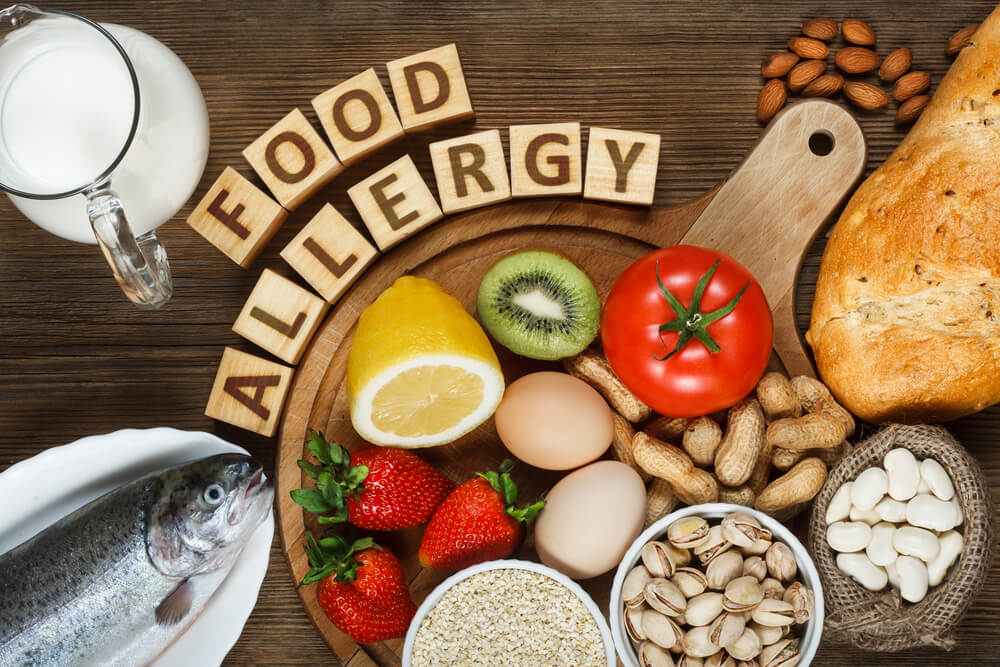Isn’t it horrible when you love the taste of particular food, but your body simply does not react well to it? You get bloated and experience different pains and discomfort, so you are forced to cut it from your regular diet. All of this can indicate a food allergy, and in this article, we will elaborate more on the symptoms, risks, and types of the most common allergies.
Food allergies are prevalent, and in the United States, almost 10% of the population, both adults and children, suffer from some type of food allergy. Medically, it is possible to have an allergy to all sorts of foods. Still, only eight food groups are often responsible for symptoms arising from consuming food that causes allergies.
Symptoms in question can be quite severe and very damaging to the overall flora of our organism and our digestive tract, so it is essential to pay attention to the reaction your body has after consuming certain foods and visit a doctor to discuss the severity of the condition and a potential treatment path.
Places like the Allergy and Immunology Center are equipped with expert teams and prime technology, which can help you mitigate any allergy symptoms. Experts such as Dr. Bassem Chahine are available to patients who struggle with food allergies to give advice and guidance and help create a treatment plan that will be tailored to their specific needs and wishes.
ABCs of Food Allergies

A food allergy is defined as a condition where different foods cause the body’s immune system to react abnormally. Our immune system recognizes specific proteins in food as damaging and harmful, so it creates protection measures, such as histamine release, to safeguard our body, causing inflammation.
Different dosages of certain foods can cause symptoms, but for some people, even a tiny amount of the food that causes allergies can trigger a response that can sometimes be even life-threatening.
When talking about the symptoms of food allergies, they are various and can escalate immediately or can take up to a few hours or days after consumption. This depends mainly on the type of food allergy you are suffering from, but below we are bringing some of the most common symptoms which occur with almost all kinds of food allergies:
- Tongue, face, and mouth swelling
- Low blood pressure
- Breathing difficulties
- Diarrhea
- Vomiting
- Rashes
- Hives
- Feeling itchy
- Anaphylaxis (in severe cases)
Symptoms that appear almost immediately are swelling of the tongue, short breath, rash, and low blood pressure. When this starts to occur, you need to contact your doctor immediately because sometimes the outcome might be fatal.
It is essential to differentiate between food allergies and food intolerances, mainly because food intolerances do not involve the immune system, and they cannot cause any severe reactions. However, they are not comfortable, and they can have a negative impact on the overall quality of a person’s life.
Types of Food Allergies
Experts recognize two main types of food allergies, those that cause the creation of immunoglobulin antibodies and those that do not.
- Immunoglobulin E (IgE) mediated food allergy is an allergy where the body’s immune system creates IgE antibodies. These antibodies are a type of blood protein used by the body to fight harmful substances and protect the organism.
The allergic reaction, caused by the production of IgE antibodies, takes a few hours to develop. Still, it can cause severe symptoms, including anaphylaxis, i.e., when the body releases chemicals that can cause a person to go into a state of shock and block the airways.
- Non-immunoglobulin-mediated allergies do not cause the body to produce IgE antibodies, but other parts of the immune system are activated to protect our organism. The symptoms usually develop on the skin or in the digestive tract, causing nausea, vomiting, and diarrhea, and they can take up to three days to develop.
Most Common Allergies

As mentioned in the beginning, people can be allergic to all sorts of different foods. Still, the most common food allergies are divided into eight categories, and below you can find a list with additional explanations:
- Cow’s milk: This type of food allergy is most often noticed in young children and babies, but it is outgrown by age three, so it is unlikely to occur in adults. The most common is the IgE-mediated form which can cause severe symptoms such as swelling, vomiting, rash, etc. The general recommendation for treatment is avoiding cow products overall, including cheese, butter, milk powder, yogurt, cream, ice cream, etc.
- Eggs: This is the second most frequent allergy in children, but it is also outgrown by their teenage years. Symptoms can include skin rashes, respiratory issues, digestive problems, etc. People can be allergic to egg whites and egg yolks separately, but the allergy to egg whites is more common.
Although the general recommendation is to avoid eggs and foods containing eggs, different research shows that heating eggs change the proteins which cause the allergy so that the body might react differently to this form of egg proteins. In any case, consuming eggs can cause severe consequences, so speak to your doctor about your options.
- Tree nuts: As the name indicates, this allergy relates to seeds and nuts originating from trees such as brazil nuts, cashews, almonds, walnuts, pistachios, macadamia nuts, etc. Almost 3% of people worldwide suffer from this type of allergy and will also face an allergic reaction to any food containing nuts.
Patients are advised to avoid all types of nuts to be on the safe side, and unfortunately, this allergy cannot be outgrown; it is a lifelong state. Nut allergies can be very severe, and 50% of cases cause anaphylaxis and death, so carrying an epinephrine injection is often advised.
- Peanuts: An allergy to peanuts is very similar to being allergic to nuts. The symptoms are similar, and people who have this type of allergy are often allergic to tree nuts, as well. It is unknown when and how this allergy develops, but family history might be one of the risk factors. Avoiding peanuts and food containing peanuts is, for now, the only advised treatment.
- Shellfish: Being allergic to shellfish means that you are allergic to prawns, crayfish, shrimp, lobster, squid, scallops, etc. The trigger for this allergy is a protein called tropomyosin, and the symptoms usually come very quickly, so it is advised to stay away from any food containing shellfish, including vapors coming from the process of cooking.
- Wheat: This type of allergy primarily affects children, and they often outgrow it by the age of ten. The symptoms can include vomiting, hives, rash, swelling but also anaphylaxis. It is advised to avoid any wheat-containing foods.
- Soy: Mostly infants and toddlers are affected by a soy allergy. It can be outgrown, and the symptoms can include tingly feelings in the mouth and nose, rashes, breathing issues but also anaphylaxis. Staying away from soy is the only way to mitigate the symptoms.
- Fish: Almost 7% of adults suffer from fish allergies. It can be quite severe and fatal, so it is essential to avoid fish and carry an epinephrine injection in case food containing fish is consumed by accident.
Do You Suspect You Have a Food Allergy?
If you are noticing symptoms that can be connected to a food allergy, make sure you contact your chosen doctor. Our center is here for any concerns, questions, and guidance, so feel free to contact our staff and schedule a consultation with our expert team. In our medical facility, you can get dietary advice, allergy tests, blood tests, etc., to determine the best treatment path for you, so call us today!


